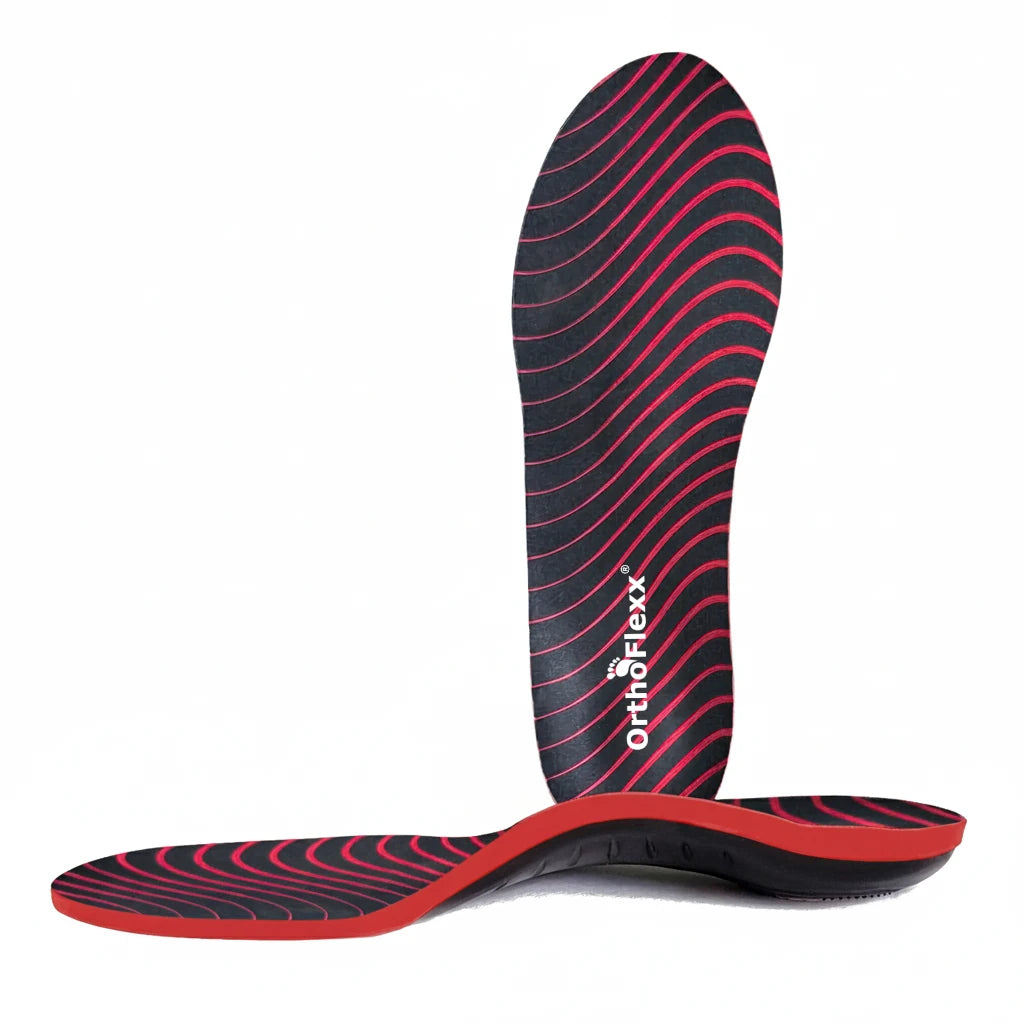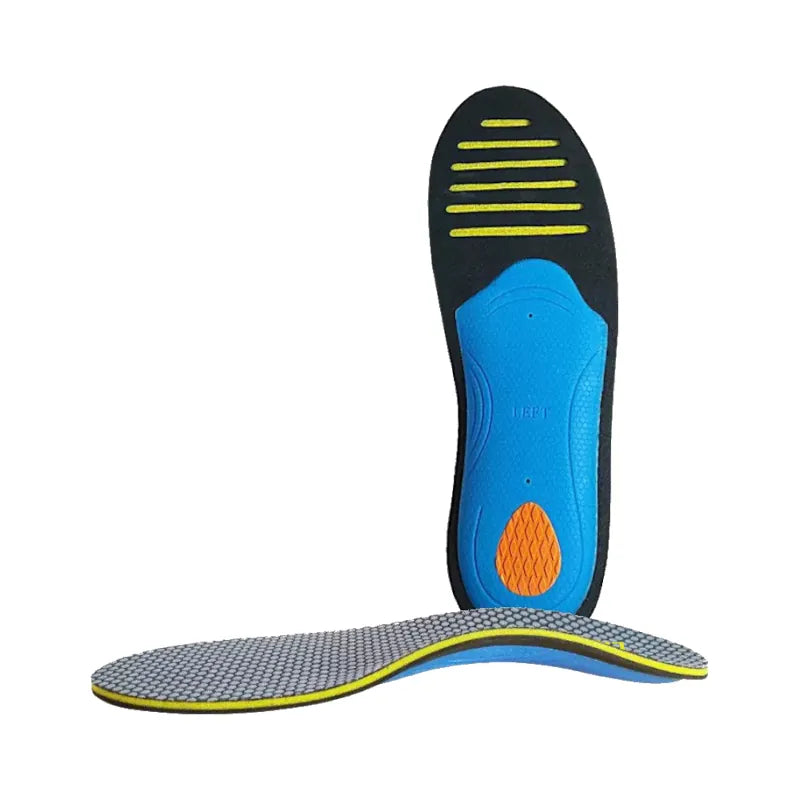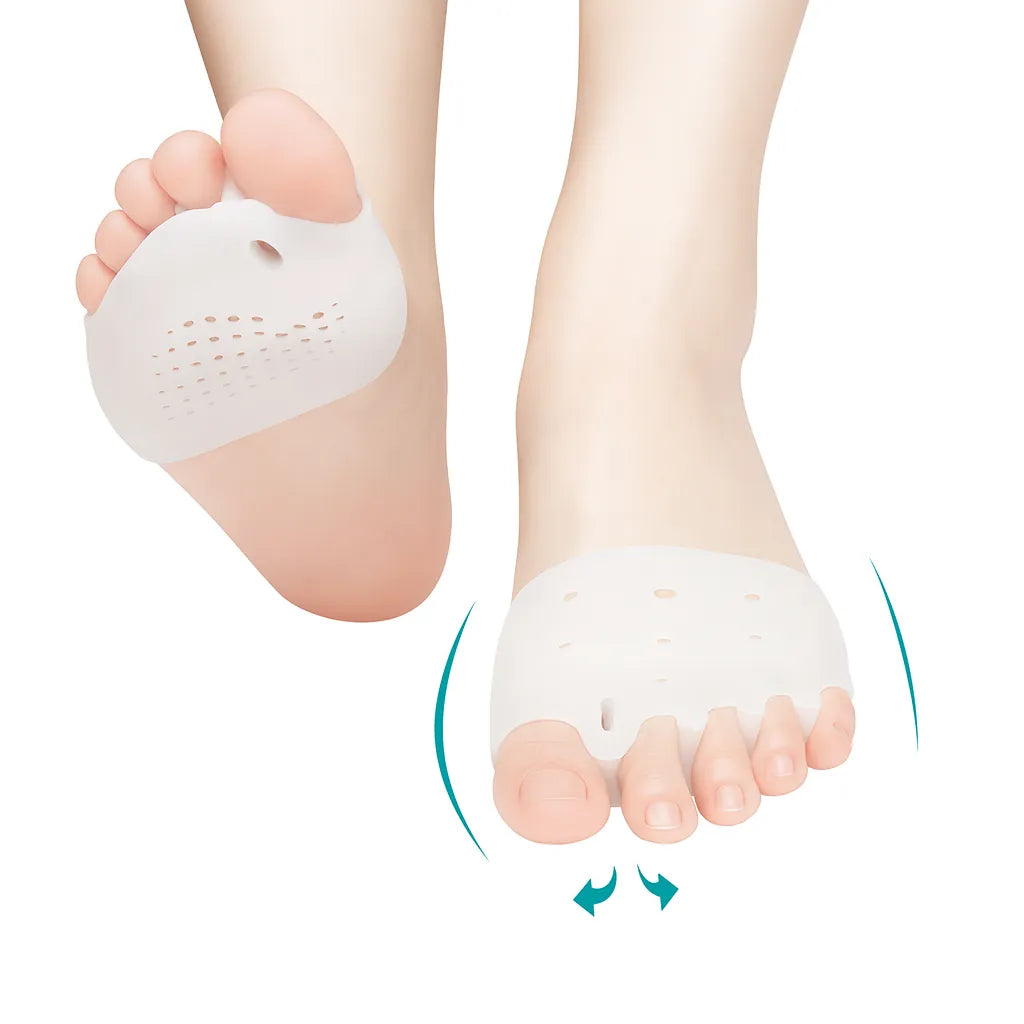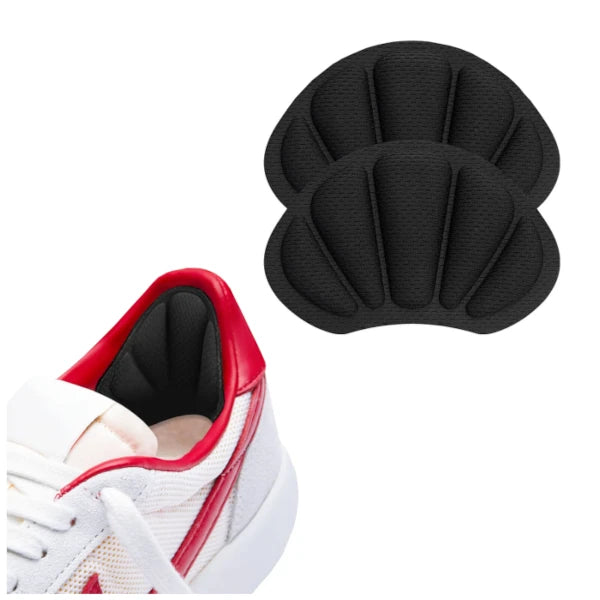
Can compression socks ease Plantar Fasciitis pain?
Share
What’s Plantar Fasciitis?
Plantar fasciitis is a condition that affects the heel and sole. It occurs when the plantar fascia, a thick band of tissue that runs along the bottom of the foot, becomes inflamed or irritated.
This can cause pain, stiffness, and discomfort, particularly when standing or walking. Learn more about Plantar Fasciitis.

Plantar fasciitis is a common cause of heel pain, affecting 1 in 10 people at some point in their lives. It is more common in middle-aged and older adults, as well as in athletes and people who spend a lot of time on their feet.
Plantar Fasciitis Symptoms
This pathology is characterized by one very typical symptom: pain in the heel or sole of the foot.
People who suffer from Plantar Fasciitis often describe it as a sharp or stabbing sensation that is most intense when taking the first steps in the morning or after a period of rest.
The pain may also be felt after standing or walking for a long period, or after running or jumping.
Other common symptoms may be:
- Stiffness or tightness in the foot;
- Swelling or inflammation in the heel or sole;
- Tenderness or soreness of the foot;
- Difficulty to walk or stand for a long period.
It’s not also uncommon to have some people reporting a heat feeling on the foot.
What causes this condition?
The exact cause of plantar fasciitis is not always clear, but studies show that it is thought to be related to repetitive stress or strain on the plantar fascia.
Some common risk factors for plantar fasciitis include:
- Overuse or repetitive strain from sports activities - not giving the proper time for the body to recover;
- Flat feet or high arches - putting extra stress on the plantar fascia;
- Worn-out shoes - Old shoes or improper shoes used for the task don’t provide enough support/cushioning;
- Overweight or obese - the extra weight contributes to putting additional load on the feet;
Age - Age-related changes happen in our bodies, due to the natural process of getting old, so plantar fascia can become thin or start degenerating.
Treatment
The treatment for plantar fasciitis depends on the severity of the injury and the individual's symptoms. In most cases, conservative measures are recommended as a first-line treatment, such as:
- Rest for a couple of days;
- Avoid the activities that aggravate the pain;
- Mobility exercises to keep the foot mobile and fascia length;
- Ice to reduce pain and inflammation;
- Wear adequate shoes or insoles that provide cushioning and arch support.

If those mentioned above don’t work out, it’s time to contact your doctor. Additional measures should be addressed.
Compression socks for Plantar Fasciitis
Compression socks are a type of sock that applies gentle pressure to the lower limb.
They are designed to improve circulation and reduce swelling, which can help alleviate pain and discomfort in the foot.
So, they can be an effective tool for managing the symptoms of plantar fasciitis, particularly if the pain is caused by inflammation.
The gentle pressure applied by the socks can help reduce swelling and improve blood flow to the affected area, It can also help support the foot and ankle, by reducing strain on the plantar fascia.
This can be particularly helpful for people who spend a lot of time on their feet, such as athletes or healthcare workers.
When choosing compression socks for plantar fasciitis, it is important to select socks that provide the right level of compression.
Most compression socks are rated based on their level of compression, which is measured in millimeters of mercury (mmHg).
For this condition, socks with a compression level of 15-20 mmHg are usually recommended.
It’s very important to choose compression socks that fit well and are comfortable to wear, so we encourage you to try them on before buying.
Compression socks should be worn during the day and the lower limb should rest at night, as the use of this type of socks can be counterproducent.
You should understand that while compression socks can help alleviate the symptoms of plantar fasciitis, they may not be enough to fully treat the condition.
Further measures should be taken into consideration, as recommended by your healthcare professional.
Conclusion
Plantar fasciitis is a common condition that can impair your quality of life significantly, due to pain and discomfort in the foot.
There are many treatments available that can help manage the symptoms of the condition and those should be discussed with your doctor.
Generally, the conservative type of treatment solves the problem but some specific cases require more drastic means.
Compression socks are a popular and effective tool for managing plantar fasciitis, as they can help reduce swelling, improve circulation, and support the foot and ankle throughout the day.
If you are experiencing symptoms of plantar fasciitis, it is important to speak with a healthcare professional for an accurate diagnosis and appropriate treatment plan.
With the right treatment, exercise and self-care, most people with plantar fasciitis are able to manage their symptoms and continue to engage in their daily and sports activities.
Author Bio
 Marlene Carvalho
Marlene Carvalho
Certified Sports Physiotherapist of Elite and Olympic athletes; Performance Coach to racing drivers
Marlene Carvalho is a sports physiotherapist passionate about all things sports.
References
- American Academy of Orthopaedic Surgeons. Plantar Fasciitis. https://orthoinfo.aaos.org/en/diseases--conditions/plantar-fasciitis/
- Harvard Health Publishing. Plantar Fasciitis. https://www.health.harvard.edu/a_to_z/plantar-fasciitis-a-to-z
- National Institute of Arthritis and Musculoskeletal and Skin Diseases. Plantar Fasciitis. https://www.niams.nih.gov/health-topics/plantar-fasciitis













